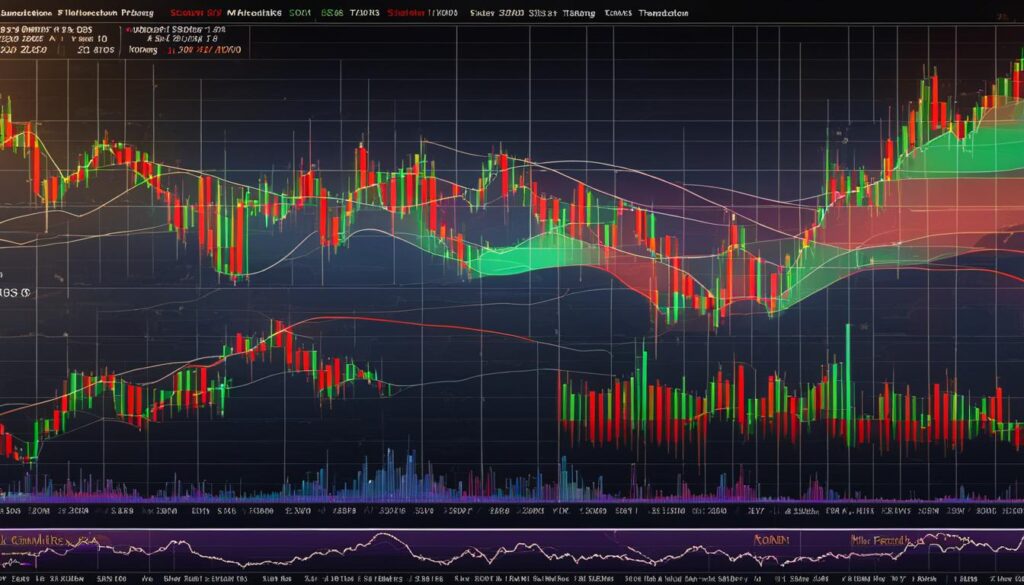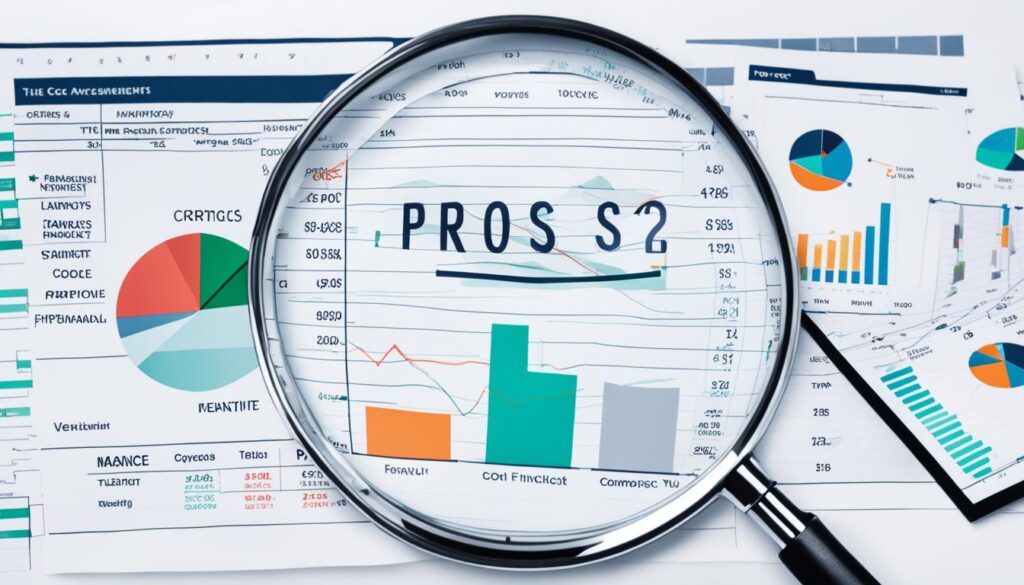When it comes to stock trading, there are two primary techniques that professionals employ: technical analysis and fundamental analysis. These approaches provide valuable insights into the market and guide investment strategies. Understanding the differences between technical and fundamental analysis is crucial for traders and investors alike.
Technical analysis revolves around analyzing historical price and volume data to predict future price movements. Traders who use technical analysis rely on tools such as charts, trend lines, and indicators to identify patterns and trends. They believe that all relevant information about a stock is reflected in its price and volume data.
On the other hand, fundamental analysis delves deep into the financial health and performance of a company. By evaluating factors such as revenue, earnings, debt, management, and competitive positioning, fundamental analysts aim to determine the intrinsic value of a stock. They believe that understanding the underlying fundamentals of a company is key to identifying undervalued or overvalued stocks.
Key Takeaways:
- Technical analysis focuses on historical price and volume data to predict future price movements.
- Fundamental analysis evaluates the financial health and performance of a company to determine the intrinsic value of a stock.
- Technical analysis is useful for short-term traders, while fundamental analysis is essential for long-term investors.
- Traders and investors often use a combination of both techniques to refine their stock trading strategies.
- Choosing between technical and fundamental analysis depends on individual preferences and investment goals.
What is Technical Analysis?
Technical analysis is a method used in stock trading that involves studying the historical price and volume data of a stock to predict future price movements. By analyzing past market behavior, technical analysts aim to identify patterns, trends, and potential entry and exit points for trades.
This approach relies on various tools and indicators, such as charts, trend lines, and oscillators, to gather insights from the data. Technical analysts believe that all the necessary information about a stock is reflected in its price and volume data, making it possible to make informed trading decisions.
Technical analysis is based on the premise that historical price movements tend to repeat themselves over time. By identifying patterns and trends, technical analysts attempt to anticipate future price movements and take advantage of potential opportunities in the market.
The Key Elements of Technical Analysis
To perform technical analysis effectively, traders use various techniques and tools:
- Charts: Line charts, bar charts, and candlestick charts visually represent the price movements of a stock over a specific period, helping analysts identify patterns and trends.
- Trend lines: These lines connect the price highs and lows, allowing analysts to visualize the direction of the trend and potential support or resistance levels.
- Indicators: Technical analysts use indicators, such as moving averages, relative strength index (RSI), and stochastic oscillator, to identify overbought or oversold market conditions and potential reversal points.
- Patterns: Chart patterns, such as head and shoulders, double tops and bottoms, and triangles, provide insights into potential price reversals or continuations.
By utilizing these tools and techniques, technical analysts aim to make informed predictions about the future direction of stock prices and improve their trading decisions. However, it’s important to note that technical analysis is not foolproof and should be used in conjunction with other forms of analysis to mitigate risks.
What is Fundamental Analysis?
Fundamental analysis is a crucial approach used in stock trading to evaluate the financial health and performance of a company. Unlike technical analysis, which relies on historical price and volume data, fundamental analysis delves deep into the underlying factors that drive a company’s value.
When conducting fundamental analysis, analysts assess various aspects of a company’s financials, including revenue, earnings, debt levels, management competency, and competitive positioning. By examining these factors, fundamental analysts aim to determine the intrinsic value of a stock and identify whether it is undervalued or overvalued in the market.
One of the key beliefs of fundamental analysts is that the financial performance and managerial decisions of a company directly impact its stock price. By understanding the fundamental aspects of a business, analysts can gain insights into its growth potential, profitability, and long-term viability.
Fundamental analysis provides a holistic view of a company’s operations, allowing investors to assess its financial stability, profitability, and overall market position. By analyzing financial statements, industry trends, and macroeconomic factors, fundamental analysts can make informed investment decisions.
Ultimately, the goal of fundamental analysis is to uncover the intrinsic value of a stock and determine whether it is overvalued or undervalued in the market. This analysis is critical for long-term investors who aim to build a portfolio based on the financial health and performance of companies.
Key Factors Analyzed in Fundamental Analysis:
- Earnings and revenue growth
- Profitability ratios
- Debt levels and financial leverage
- Management quality and corporate governance
- Industry and market trends
By carefully evaluating these factors, fundamental analysts can gain insights into a company’s financial standing and make informed investment decisions. However, it’s important to note that fundamental analysis requires extensive research, industry knowledge, and the ability to interpret complex financial data.
Pros and Cons of Technical Analysis
Technical analysis offers several advantages for stock traders, particularly those engaged in short-term trading. By examining historical data and patterns, technical analysis enables traders to identify short-term trading opportunities and make informed decisions. Here are the pros and cons of technical analysis:
Pros of Technical Analysis
- Identification of short-term trading opportunities: Technical analysis provides traders with valuable insights into short-term price movements, allowing them to capitalize on potential profit opportunities.
- Simplicity and ease of use: Technical analysis relies on historical data and patterns, making it a straightforward and accessible approach for traders of all experience levels.
Cons of Technical Analysis
- Potential information gaps: Critics argue that technical analysis may not capture all relevant information, as it focuses solely on historical data. It may overlook significant events or news that can impact stock prices.
- Subjectivity: Technical analysis can be subjective, as different traders may interpret the same data differently, leading to varying conclusions.
- Limitations in predicting long-term trends: While technical analysis excels in identifying short-term trading opportunities, it may have limitations in predicting long-term trends and price movements.
- Potential influence of market manipulation: Technical analysis can be influenced by market manipulation, as traders may manipulate price movements to trigger certain technical indicators and mislead other participants.
Despite these limitations, technical analysis remains a valuable tool for short-term traders who rely on historical data and patterns to make trading decisions quickly. To provide further insight into the pros and cons of technical analysis, here is a table summarizing its key aspects:
| Pros of Technical Analysis | Cons of Technical Analysis |
|---|---|
| Identification of short-term trading opportunities | Potential information gaps |
| Simplicity and ease of use | Subjectivity |
| Limitations in predicting long-term trends | |
| Potential influence of market manipulation |
Overall, while technical analysis has its benefits, it is important for traders to be aware of its limitations and consider using it in conjunction with other analysis techniques to make well-informed trading decisions.
Pros and Cons of Fundamental Analysis
Fundamental analysis is a favored approach among long-term investors seeking to make informed investment decisions. It provides a comprehensive assessment of a company’s financial health and future prospects, taking into account factors beyond price and volume data.
Pros of Fundamental Analysis:
- Accurate evaluation of a company’s financial standing and potential for long-term growth.
- Helps identify undervalued or overvalued stocks based on intrinsic value.
- Provides a deeper understanding of a company’s competitive positioning, management, and industry trends.
Cons of Fundamental Analysis:
- Requires extensive research and analysis, which can be time-consuming.
- May not accurately predict short-term price movements or market fluctuations.
- Subject to interpretation and biases, as analysts may prioritize different factors or metrics.
“Fundamental analysis allows investors to go beyond the surface and gain a deeper understanding of a company’s true value and potential. However, it requires patience, extensive research, and a long-term investment horizon.”
To illustrate the effectiveness of fundamental analysis, let’s look at an example of two companies in the same industry:
| Company | Revenue | Earnings | Debt | Management | Competitive Positioning |
|---|---|---|---|---|---|
| Company A | $100 million | $10 million | $20 million | Experienced and reputable | Dominant market share |
| Company B | $150 million | $5 million | $50 million | Inexperienced and uncertain | Weaker market position |
Based on these fundamental factors, it is evident that Company A may be a more attractive investment opportunity compared to Company B. Fundamental analysis provides valuable insights that go beyond price movements alone.
Despite its drawbacks and limitations, fundamental analysis remains a valuable tool for long-term investors seeking to build a well-rounded investment portfolio. By conducting extensive research and analysis, investors can make more informed decisions based on a thorough understanding of a company’s financial health and future prospects.
Conclusion
After examining the merits and drawbacks of technical analysis and fundamental analysis, it is clear that both approaches play a significant role in stock trading strategies. Traders and investors often combine these techniques to gain a more comprehensive understanding of the market and refine their investment decisions.
Technical analysis is particularly useful for short-term traders who rely on price patterns and trends to identify potential entry and exit points. By studying historical price and volume data, traders can make informed decisions and take advantage of short-term market fluctuations.
On the other hand, fundamental analysis is essential for long-term investors who seek to understand the underlying financial standing of a company. By evaluating factors such as revenue, earnings, and competitive positioning, investors can determine the intrinsic value of a stock and make informed decisions based on the long-term prospects of the company.
Ultimately, the choice between technical and fundamental analysis depends on individual preferences and investment goals. Some traders may opt to focus solely on technical analysis for short-term trading strategies, while others may prioritize fundamental analysis for long-term investments. However, a balanced approach that combines both techniques can provide a more robust and well-rounded perspective for successful stock trading strategies.
FAQ
What is technical analysis?
Technical analysis is the study of historical price and volume data of a stock to predict future price movements. It involves the use of tools and indicators, such as charts and trend lines, to identify patterns and potential entry and exit points.
What is fundamental analysis?
Fundamental analysis is the evaluation of the financial health and performance of a company. It involves analyzing factors such as revenue, earnings, debt, management, and competitive positioning to determine the intrinsic value of a stock.
What are the pros of technical analysis?
The pros of technical analysis include its ability to identify short-term trading opportunities and its simplicity, as it relies on historical data and patterns.
What are the cons of technical analysis?
Critics argue that technical analysis may not capture all relevant information, can be subjective, and has limitations in predicting long-term trends. It can also be influenced by market manipulation.
What are the pros of fundamental analysis?
The pros of fundamental analysis include providing a comprehensive assessment of a company’s financial health and future prospects. It takes into account factors beyond price and volume data, making it useful for long-term investors.
What are the cons of fundamental analysis?
Critics argue that fundamental analysis may not accurately predict short-term price movements. It also requires extensive research and analysis, which can be time-consuming.
Can I use both technical and fundamental analysis?
Yes, many traders and investors use a combination of these techniques to refine their stock trading strategies. Technical analysis is useful for short-term traders, while fundamental analysis is essential for long-term investors seeking a deeper understanding of a company’s financial standing.
Source Links
- https://www.investopedia.com/google-lays-off-hundreds-of-workers-across-its-assistant-ar-and-devices-teams-8425069
- https://www.cnbc.com/2024/01/11/stocks-making-the-biggest-moves-midday-paramount-warner-bros-discovery-lyft-and-more.html
- https://stocknews.com/news/intc-qcom-dbrg-intel-intc-vs-qualcomm-qcom-strategies-for-investors-in-2024/
Disclaimer
All information on this website is of a general nature. The information is not adapted to conditions that are specific to your person or entity. The information provided can not be considered as personal, professional or legal advice or investment advice to the user.
This website and all information is intended for educational purposes only and does not give financial advice. Signal Mastermind Signals is not a service to provide legal and financial advice; any information provided here is only the personal opinion of the author (not advice or financial advice in any sense, and in the sense of any act, ordinance or law of any country) and must not be used for financial activities. Signal Mastermind Signals does not offer, operate or provide financial, brokerage, commercial or investment services and is not a financial advisor. Rather, Signal Mastermind Signals is an educational site and a platform for exchanging Forex information. Whenever information is disclosed, whether express or implied, about profit or revenue, it is not a guarantee. No method or trading system ensures that it will generate a profit, so always remember that trade can lead to a loss. Trading responsibility, whether resulting in profits or losses, is yours and you must agree not to hold Signal Mastermind Signals or other information providers that are responsible in any way whatsoever. The use of the system means that the user accepts Disclaimer and Terms of Use.
Signal Mastermind Signals is not represented as a registered investment consultant or brokerage dealer nor offers to buy or sell any of the financial instruments mentioned in the service offered.
While Signal Mastermind Signals believes that the content provided is accurate, there are no explicit or implied warranties of accuracy. The information provided is believed to be reliable; Signal Mastermind Signals does not guarantee the accuracy or completeness of the information provided. Third parties refer to Signal Mastermind Signals to provide technology and information if a third party fails, and then there is a risk that the information may be delayed or not delivered at all.
All information and comments contained on this website, including but not limited to, opinions, analyzes, news, prices, research, and general, do not constitute investment advice or an invitation to buy or sell any type of instrument. Signal Mastermind Signals assumes no responsibility for any loss or damage that may result, directly or indirectly, from the use or dependence on such information.
All information contained on this web site is a personal opinion or belief of the author. None of these data is a recommendation or financial advice in any sense, also within the meaning of any commercial act or law. Writers, publishers and affiliates of Signal Mastermind Signals are not responsible for your trading in any way.
The information and opinions contained in the site are provided for information only and for educational reasons, should never be considered as direct or indirect advice to open a trading account and / or invest money in Forex trading with any Forex company . Signal Mastermind Signals assumes no responsibility for any decisions taken by the user to create a merchant account with any of the brokers listed on this website. Anyone who decides to set up a trading account or use the services, free of charge or paid, to any of the Broker companies mentioned on this website, bears full responsibility for their actions.
Any institution that offers a service and is listed on this website, including forex brokers, financial companies and other institutions, is present only for informational purposes. All ratings, ratings, banners, reviews, or other information found for any of the above-mentioned institutions are provided in a strictly objective manner and according to the best possible reflection of the materials on the official website of the company.
Forex/CFD trading is potentially high risk and may not be suitable for all investors. The high level of leverage can work both for and against traders. Before each Forex/CFD investment, you should carefully consider your goals, past experience and risk level. The opinions and data contained on this site should not be considered as suggestions or advice for the sale or purchase of currency or other instruments. Past results do not show or guarantee future results.
Neither Signal Mastermind Signals nor its affiliates ensure the accuracy of the content provided on this Site. You explicitly agree that viewing, visiting or using this website is at your own risk.



